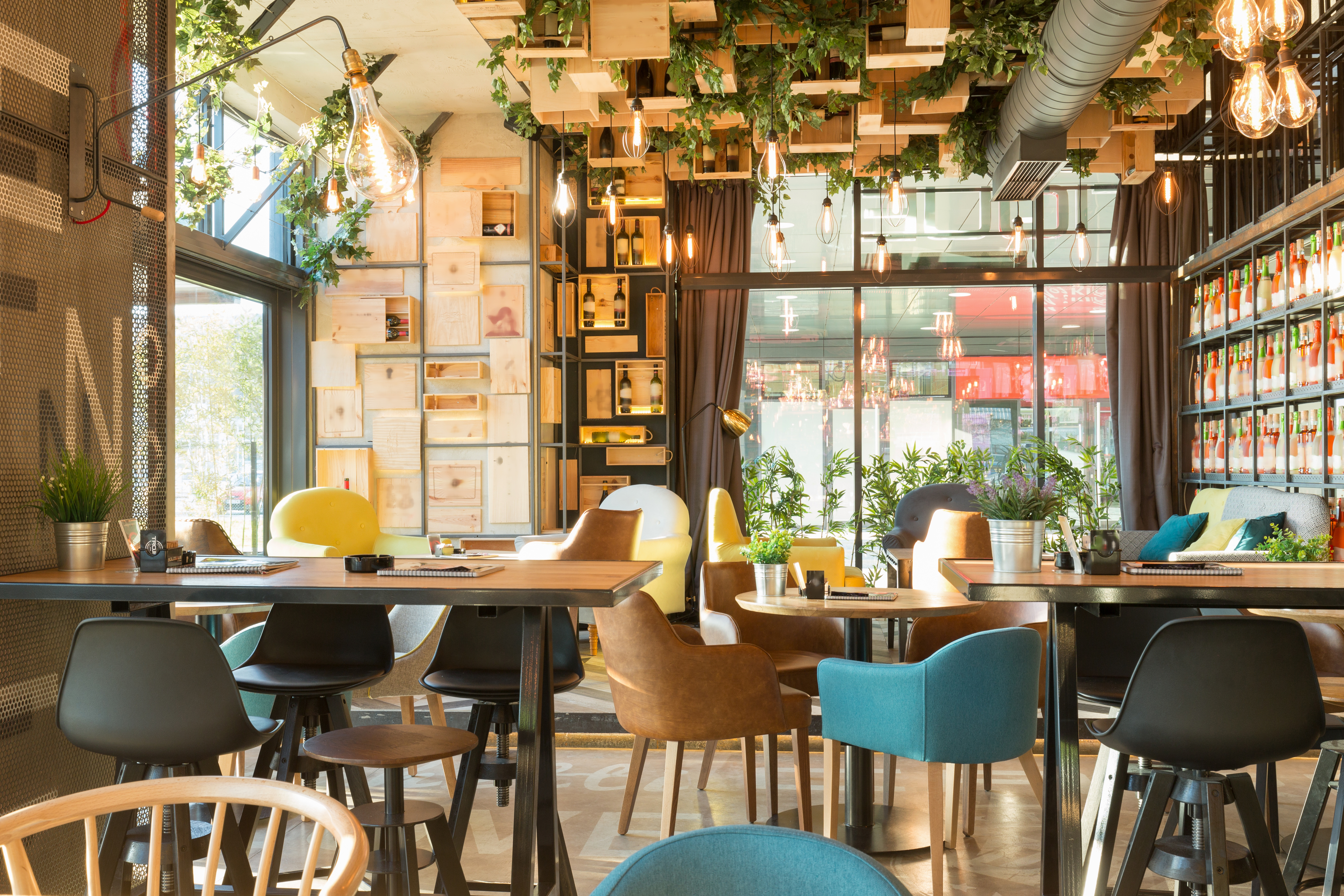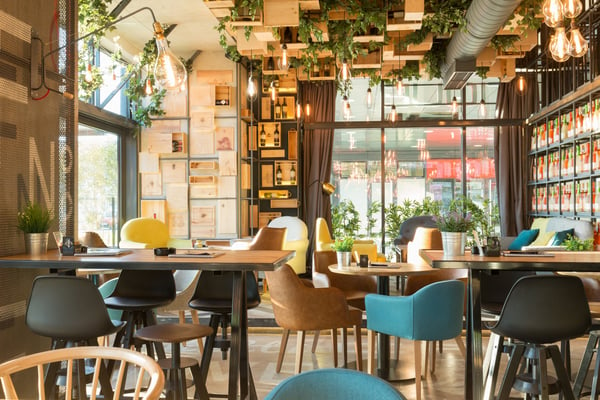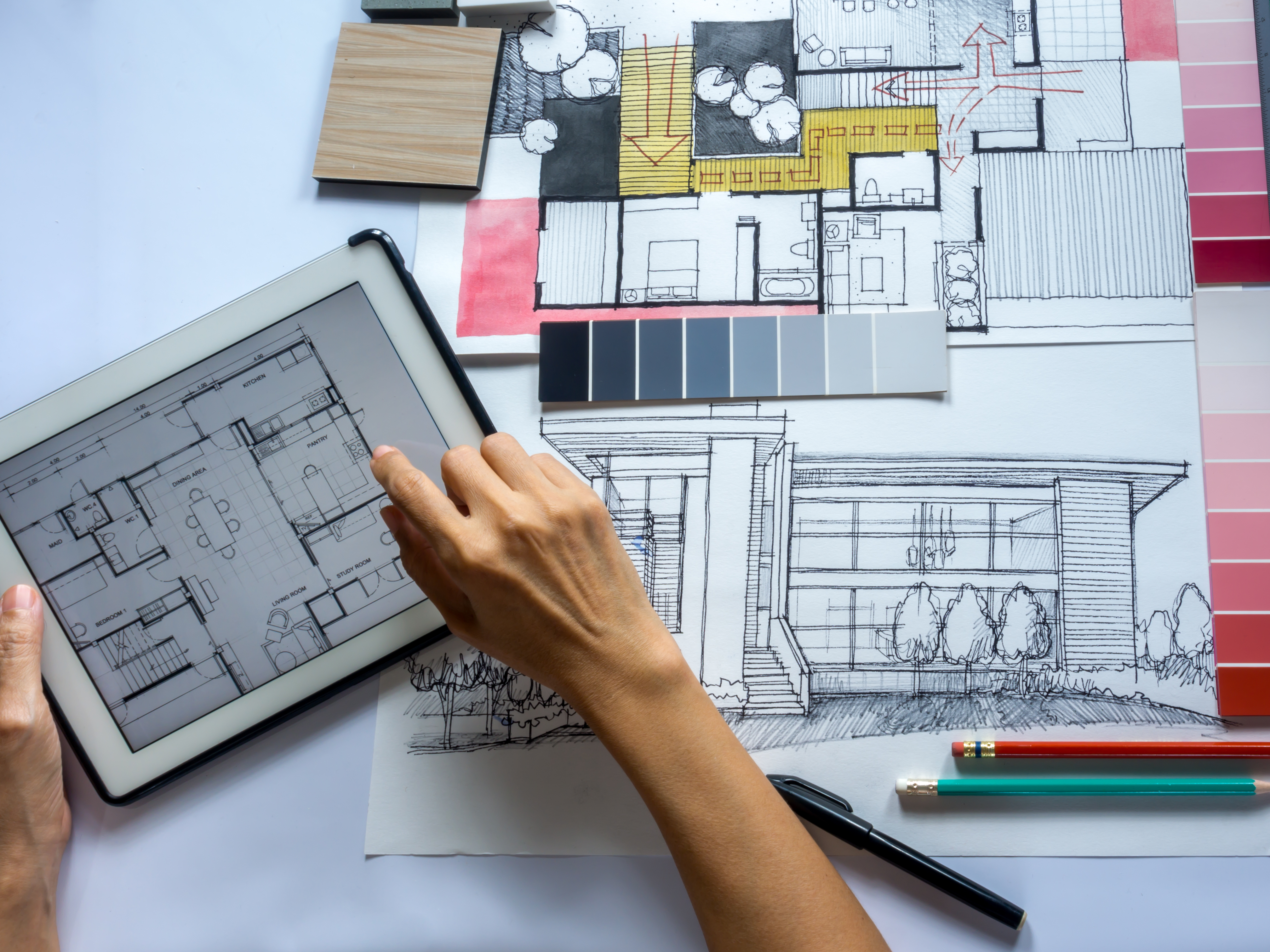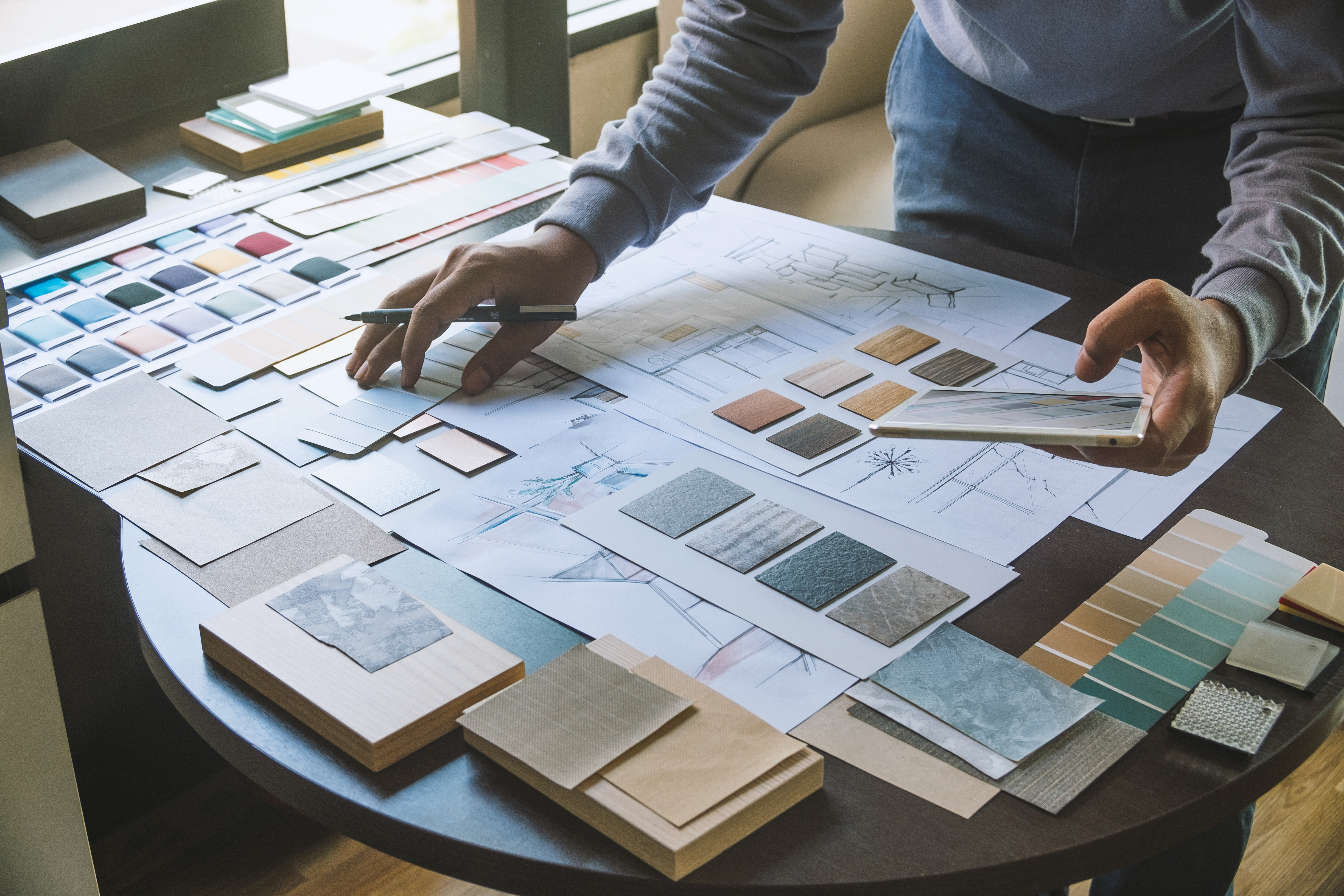10 Basic Interior Design Tips for Restaurants

Starting a business is stressful enough as it is, especially when opening a new restaurant. There are thousands of eating establishments located in each and every city all around the world. To stand out among competitors, restaurants need an edge over their counterparts. This can be done in many ways such as adding unique food items to your menu, offering live entertainment or engaging with potential customers through social media ads. But the best way to outshine other eateries is through memorable interior design. An attractive aesthetic and one-of-a-kind décor can boost your restaurant's appeal and get more traffic through your door.
Here are 10 basic interior designs for restaurants to keep in mind when fitting out a new space or redecorating an existing eatery:
1. Eye-catching Entrance
The entrance to your restaurant is the first thing that every passer-by notices. Attract walk-ins with an eye-catching and unique storefront or entryway that clearly promotes your restaurant's name and image. For example, if your eatery is jungle-themed, consider having your entrance in the shape of a cave. Or if you’re going for a more glitzy, over-the-top theme, then rolling out a red carpet lined with velvet ropes will make every customer feel special.
2. Design for Your Target Customers
When designing the interior of your restaurant, always keep your target clientele in mind. The space should be comfortable and appealing, from the colour scheme and lighting to the furniture and wall art, so that customers will want to return. If you’re looking to attract a younger crowd, utilise bright colours and funky artwork to inspire their next Instagram picture. While a minimalist look with clean lines, natural materials and a simple colour scheme is more likely to attract working professionals and more mature age groups.
Whoever your target customers are, ensure that your restaurant is a place they will want to spend time in.
3. Lighting is Key
The lighting of your restaurant is arguably the most important point on this list to keep in mind when designing your interior. Lighting sets the tone and atmosphere of a restaurant. A good rule of thumb is to avoid bright, fluorescent lights and cold lighting. Use warm, ambient lighting that can be dimmed according to the time of day to set an inviting, relaxed mood. A firm favourite in restaurants are having candles on every table for a more intimate setting.
Besides the feel, other factors to consider when choosing the lighting is energy efficiency, staff safety and how well customers can see or take pictures.
4. Unique Artwork
Investing in unique wall art and artworks are easy ways to make your restaurant more appealing to customers. This can be done in several ways including murals, graffiti pieces, old-school neon lights, typography wall art, or simply by partnering with local artists to feature their art in your restaurant in exchange for exposure. Select your artwork wisely though, as it must complement the overall theme and feel of the space.
If you really want to grab customers’ attention, commission bespoke artwork that incorporates your company’s logo, name or related quotes to ensure your restaurant is always associated with something beautiful and memorable.

5. Attractive Colour Scheme
The psychology behind choosing a colour scheme is well-known to all interior designers. The colour scheme does not only enhance the overall look and feel of a restaurant but it also influences customers moods, feelings and actions. For example, the use of red has been scientifically proven to increase appetites, while shades of blue tend to slow down metabolisms.
There’s more to choosing a colour than what pops most or looks prettiest – there’s an entire science behind it. And this is why colour is such an important factor to consider when decorating a restaurant
6. Personal Touch
Decorating your restaurant with tiny knick-knacks will give the space a more personalised feel and is more likely to be remembered by customers than the overall design of the space. Whether it be shelves filled with indoor plants to add a touch of nature or personal photographs lining the walls, adding a few special details or elements will make your restaurant more appealing and memorable to customers.
7. Functional Table Layout
Before designing your restaurant, you should have a good idea of who your target clientele is. Use this knowledge to design a functional and efficient table layout that caters to your customers' needs. Your table layout should ensure that couples will have a little privacy, families will have enough open space and business meetings can occur in quiet corners. And be sure that tables are well-spaced apart and that the bathroom is easily locatable no matter where a customer is seated. Ideally, you should have a good blend of 2, 4 and 6 top tables depending on your restaurant type. For example, family restaurants need more 6 top tables while pubs and cafes typically need more 2 top tables.
A well-functioning layout is key to running a successful restaurant.
8. Memorable Theme
With so many restaurants to compete against, it can be difficult to stand out among the crowd. One way to outshine your competitors is through a unique theme that customers can enjoy time and time again. Be sure to pick a theme that isn’t too trendy or overused as it will look dated in a few years. Instead, pick something that truly reflects your menu and brand to give you an evergreen edge.
9. Comfortable Furniture
Majority of a customer’s time at a restaurant is spent sitting at a table. Make sure your furniture is comfortable and durable. And remember, customers don’t visit a restaurant for the furniture, so there’s no need to go overboard and spend thousands on a fancy chair – you can still get tasteful décor for a reasonable price.
10. All About the Kitchen
The kitchen is the heart of your restaurant – it’s where the food comes to life. Therefore, it requires a lot of focus when planning its design. A good rule of thumb is to design a unique service window, glass doors or simply have an open-plan kitchen to give customers a look into the Back of the House. Customers love being able to see how their food is being prepared and watching what happens in a restaurant kitchen. It also allows for transparency and peace of mind which fosters trust and loyalty in customers. You can also make the kitchen part of the décor by having a wood-burning oven as a focal point or “exposing” the wine cellar.
No matter the design you choose, every kitchen needs to be well illuminated and have proper ventilation for optimal performance.
If you’d like to fit out a new restaurant space or redecorate an existing one to attract more customers, Contractors.Direct can connect you with qualified contractors who can bring your vision to life.

Written by Kirsten Delcie
As a seasoned project professional, Kirsten has been curating and creating content for Contractors Direct since the company's inception. Her diligent research methods and style lend themselves to the valuable insight driven blog posts you see here. Outside of content creation Kirsten is an avid reader and scuba diver and combines both as often as possible!
Ready for a Stunning New Space?
Dream for a new look for your space? Make an appointment today for the perfect contractor for you. We'll work with you to make your vision a reality.
Related Posts

What Do Interior Architects Do and Why Do You Need One for Your Home?
When renovating or outfitting a residential address, the phrase “interior...

How to Hire an Interior Firm & Why You Need One for Your Retail Fitout
If you’re debating whether or not you should hire an interior design firm for...

